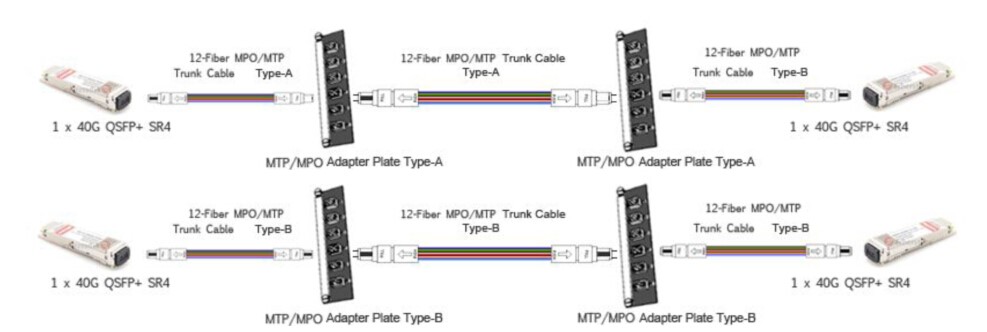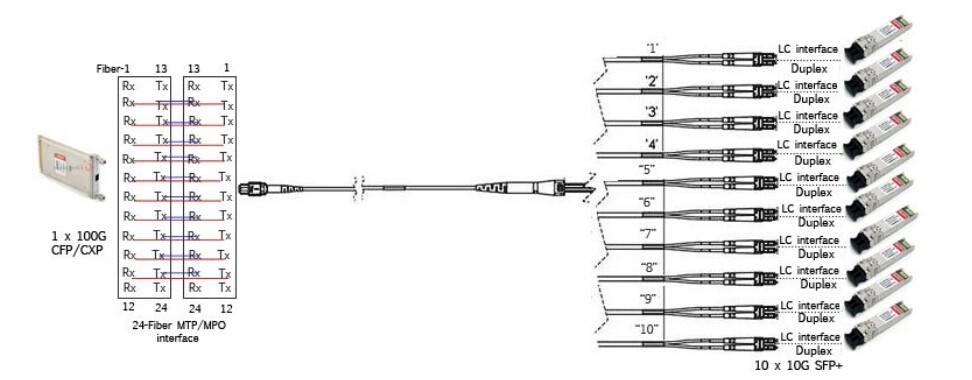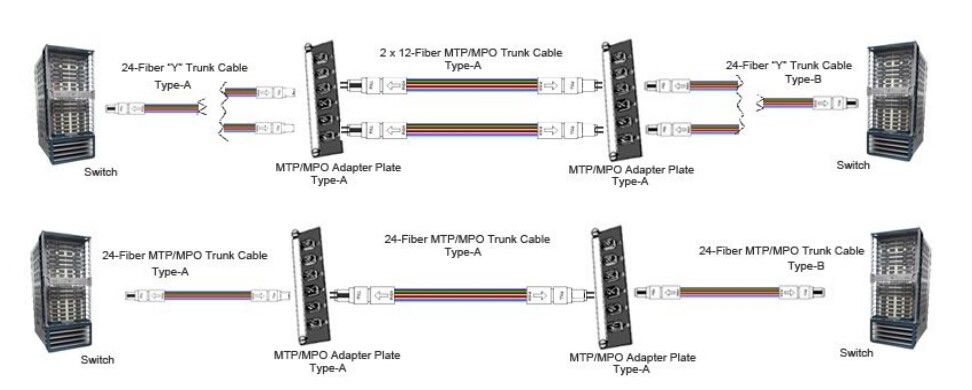The demand for network growth is rapidly increasing, which is due to the massive amount of storage needed for high bandwidth applications. Large growth hence spurs the requirements for expansion and scalability in the data centre. Cabling infrastructures must evolve to provide reliability, manageability and flexibility. Obviously, the conservative 2-fibre transmission is not enough to catch up with the speed. And 12 or 24-fibre 40/100G Ethernet migration is quickly becoming a matter of survival. This article offers cabling solutions for cost-effective and simplified migration for 40/100G within the data centre.
40/100G Ethernet employ parallel optics. Parallel optics transmission, compared to traditional serial transmission, uses an optic module interface where data is simultaneously transmitted and received over multiple fibres. For the 40GE transmission, 4 x 10G on 4 fibres per direction and 10 x 10G on 10 fibres per direction for the 100GE. Which ushers the need for the high quality and low loss multimode MTP connectors and assemblies.
Migration from 10G to 40G system utilises 40G MTP/MPO breakout cables, with an MTP/MPO connector on one end and four duplex LC connectors on the other end. The IEEE ratified the 40GBASE-SR4 (MPO/MTP interface) standard that uses 4 lanes at 10G SFP+ (LC interface) per lane over multimode fibre for a total of 8 fibres.
Parallel optics 40GBASE-SR4 uses 8 out of 12 MTP/MPO interfaces fibres transmitting 4 duplex channels (4 for transmit and 4 receive), as shown in the following picture. QSFP+ to SFP+ breakout cable is 8-fibres MTP to LC breakout assembly.

As for data transmission between two 40G switches, 40G QSFP+ SR4 transceivers are generally adopted, transmitting signals over four duplex 10G lanes (4 transmit and 4 receive). A 12-fibreMTP/MPO trunk are involved, with 8 out of 12 fibres used to achieve 4 duplex signals transmission. And MTP/MPO adapter panels can be installed easily to make the next adaptation, as the following picture indicates.

Migrating from 10G to 100G still utilises 100G MTP/MPO breakout cable, the IEEE ratified the 100GBASE-SR10 (MTP/MPO interface) standard that uses 10 lanes at 10G SFP+ per lane over multiple fibre for a total of 20 fibres. Parallel optics 100GBASE-SR10 uses 20 out of 24 MTP/MPO interface fibres transmitting 10 duplex channels.

100G connectivity can be achieved through ten 10G SFP+ transceivers. SFP+ transceiver operates on legacy duplex 10G lanes, thus taking full advantage of the existing network infrastructure. With a 24-fibre MTP/MPO trunk cable, of which 20 out of the 24 fibres are used to make duplex 10×10G transmission.

We can also get 100G to 100G connectivity via MTP/MPO assemblies: simply use the 24-fibre MTP/MPO interface trunk cable or 2×12-fibre MTP/MPO interface trunk cable. As shown in the following picture.

With the rapid increase in bandwidth consumption, the migration from 10G to 40/100G is inevitable. The economics of cost per port per 10Gbps is much more favorable for a 40GBASE-SR4 and 100GBASE-SR10 network. All the transceivers and cabling assemblies presented in the solutions are available in FS.COM. For more details, please visit www.fs.com or contact us via sales@fs.com.
